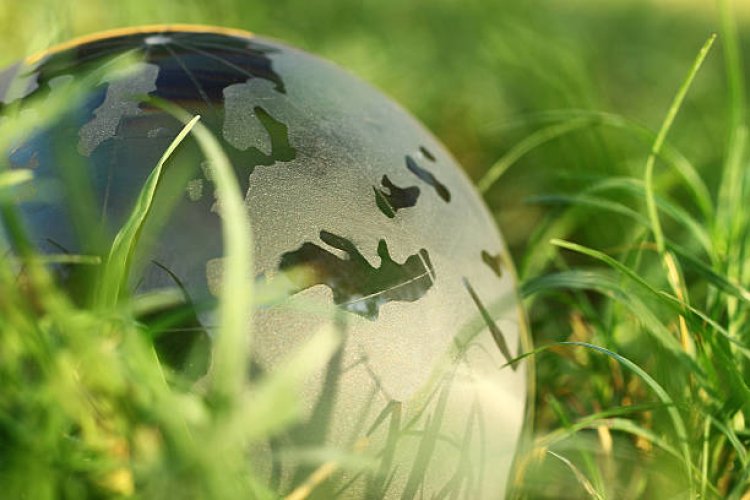Accurate Crop Map Solutions for Smarter Farm Planning
A crop map provides vital insights into the spatial distribution of different crops across regions, empowering stakeholders with the knowledge needed to make smart, informed decisions.
Share this Post to earn Money ( Upto ₹100 per 1000 Views )

In today’s technologically advanced agricultural world, data-driven decision-making plays a critical role in boosting productivity and sustainability. One such powerful tool that has transformed the way farmers and agricultural planners approach farming is the crop map. A crop map provides vital insights into the spatial distribution of different crops across regions, empowering stakeholders with the knowledge needed to make smart, informed decisions.
What Is a Crop Map?
A crop map is a visual representation that identifies the types and extent of various crops planted in specific geographical areas. These maps are usually generated using satellite imagery, remote sensing data, and field observations. With advancements in artificial intelligence and geospatial technologies, modern crop maps can offer real-time or seasonal information, enhancing their accuracy and utility.
Importance of Crop Mapping in Agriculture
Crop mapping plays a pivotal role in agricultural planning and management. By understanding where different crops are grown, policymakers and farmers can evaluate land use patterns, forecast yields, assess food security, and plan supply chains efficiently.
Furthermore, a crop map helps in detecting shifts in cropping patterns due to climate change, market demand, or environmental policies. This allows governments and institutions to address challenges proactively.
How Crop Maps Are Created
The creation of a crop map involves a combination of technologies and techniques:
-
Satellite Imagery: High-resolution satellite data provides the visual foundation for identifying different land cover types.
-
Remote Sensing: Sensors capture data on vegetation indices like NDVI (Normalized Difference Vegetation Index), which helps distinguish between crop types.
-
Machine Learning Models: These algorithms are trained on historical data to classify and predict the crop types accurately.
-
Ground-Truthing: Field surveys are conducted to validate and calibrate the data collected remotely.
With these tools, a crop map can be generated for large areas within a short period, making it a cost-effective and scalable solution.
Benefits of Using a Crop Map
Using a crop map offers a wide array of benefits across different aspects of agriculture:
1. Optimized Resource Allocation
Farmers can use crop mapping to understand which crops are best suited for their land based on soil type, water availability, and climate. This helps in efficient allocation of resources like fertilizers, water, and labor.
2. Enhanced Supply Chain Planning
For agribusinesses and distributors, knowing the crop distribution across a region helps in anticipating market supply, organizing storage and logistics, and managing pricing strategies.
3. Disaster Management and Risk Mitigation
During events like droughts, floods, or pest outbreaks, crop maps help in identifying the affected regions quickly. This allows authorities to deliver timely aid and minimize losses.
4. Sustainable Agriculture Practices
With detailed insights from crop maps, farmers and agricultural agencies can monitor crop rotation patterns, prevent monoculture practices, and encourage biodiversity. This contributes to long-term soil health and ecosystem balance.
5. Yield Prediction and Monitoring
By analyzing historical and current crop maps, agricultural experts can predict yield trends. This helps in food security planning and global trade analysis.
Crop Maps and Precision Farming
Crop maps are integral to precision farming, where decisions are tailored to specific segments of the farm rather than a one-size-fits-all approach. A farmer using a crop map can identify areas with different performance levels, apply inputs more precisely, and maximize yield with minimum environmental impact.
Moreover, mobile apps and platforms now offer interactive crop maps, making this technology accessible even to smallholder farmers. With a smartphone and GPS-enabled app, a farmer can check the most profitable crops for their land in real time.
The Future of Crop Mapping
As technology continues to evolve, crop mapping will become even more accurate and accessible. Integration with Internet of Things (IoT) devices, drone surveillance, and AI-driven analytics will further improve map precision and usability.
Government initiatives in various countries are also promoting open data policies, enabling free access to crop maps and encouraging innovation in agricultural services. These initiatives are expected to bridge gaps in knowledge and technology, especially in developing regions.
Conclusion
The adoption of crop map solutions marks a significant step toward smarter and more sustainable agriculture. Whether you’re a small-scale farmer, a large agribusiness, or a policymaker, using crop maps can lead to better planning, resource efficiency, and increased productivity. As we move forward, embracing this powerful tool will be crucial in addressing the food security and environmental challenges of the future.
















